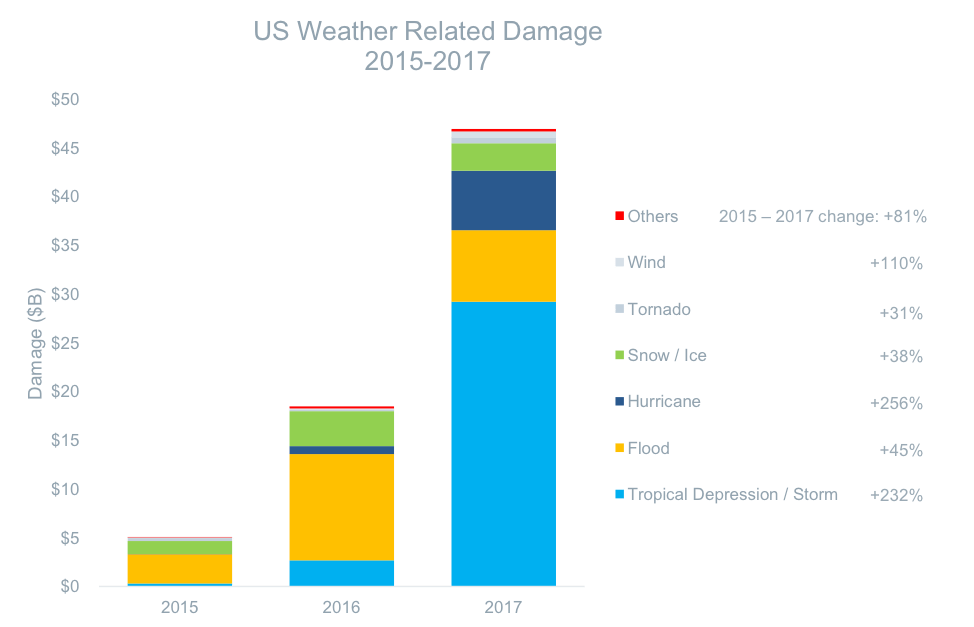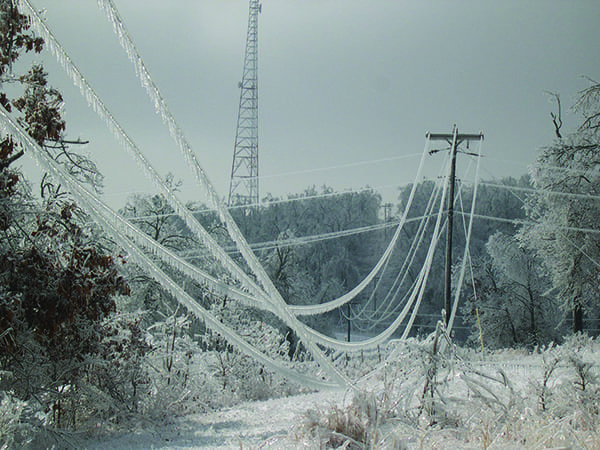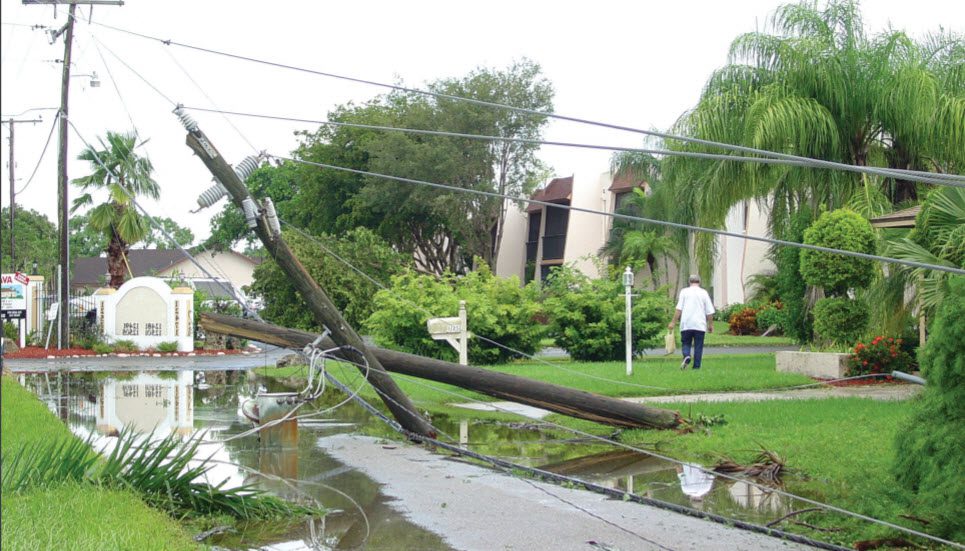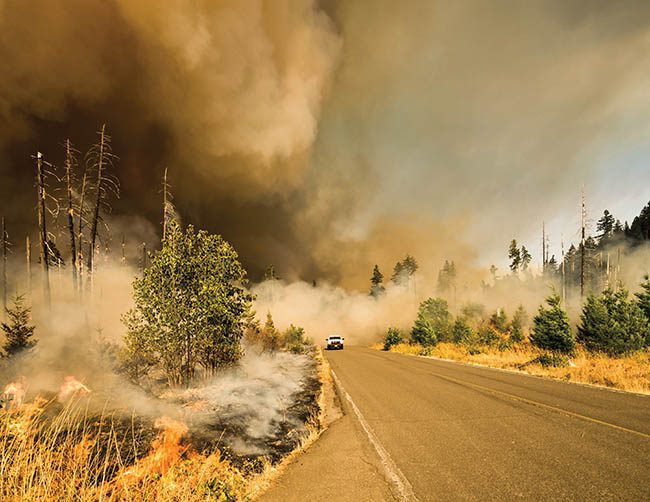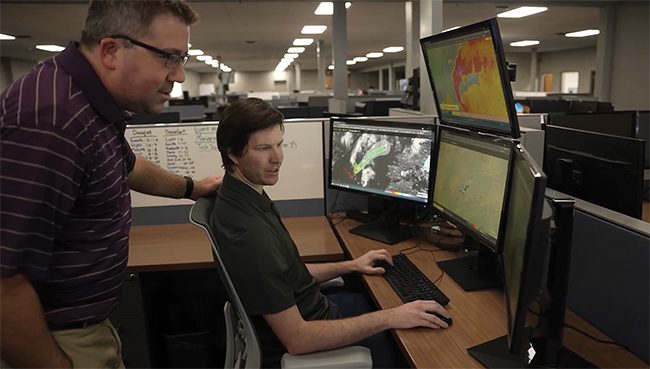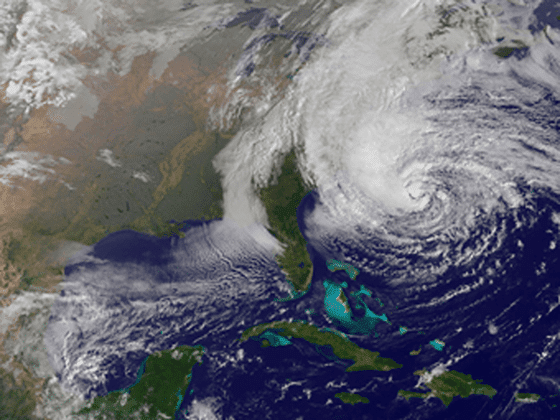Purse-string holders are pretty easily swayed to approve funding to upgrade transmission and distribution systems following major events like Superstorm Sandy and Hurricane Irene. However, it is becoming increasingly obvious that utilities continue to be challenged to plan for and mitigate the adverse impacts of smaller, yet impactful, weather events.
People who live in the Northeast are accustomed to wind, snow, and one or two Nor’easter storms per winter. Yet, in March 2018, four consecutive Nor’easters hit the coast within the span of three weeks, and a subsequent storm rolled in just as local utilities managed to restore power to those affected during the previous storm.
Changing Weather Patterns Alter Risk Profiles
The increased frequency and ferocity of weather events represent the new normal. That means it is increasingly vital that the grid be robustly constructed and properly operated to be as resilient and reliable as possible. This is a challenge, as many utility transmission and distribution systems were designed decades ago and utilities are seeing their assets taxed by the mechanical stress of events that exceed these original, at times outdated, design standards.
U.S. utilities understand this issue and are actively working to harden their systems against damage to prevent impairment and decrease the number and duration of outages. However, many customers are unaware of the extent of the issues and needs. As a result, this lack of understanding creates reluctance on the part of both customers and regulators to accept and approve investments.
The frequency and severity of natural disasters increased from 2015 to 2017 (Figure 1), and 2018 seems to be continuing this trend. In the first eight months of 2017, hurricanes, tornadoes, and winter storms caused more damage than in all of 2016, with Hurricanes Harvey, Irma, and Maria causing major power outages in Texas, Florida, and Puerto Rico, respectively. From 2015 to 2017, storms have caused approximately $40 billion in damages in the U.S.
However, just as concerning to customers are the smaller, shorter-duration events like the March 2018 Nor’easters, which did not cause much damage in comparison, but still caused outages that took utilities a long time to restore. Customers may be more understanding of long restoration times given a severe weather incident, but are much less forgiving during smaller, non-major storms.
Understanding Risks from Extreme Weather
The first step to operating more effectively given the increased exposure to weather-related damage is to understand and project the impact of weather on the grid. Damage could occur due to flying debris or trees being knocked down by increased wind in some regions, coastal or watershed flooding in others, or fires in drier areas. Not every utility faces the same risks and impacts, and the better utility companies start to understand their particular risk vectors, the better they can design mitigation programs (Figure 2).
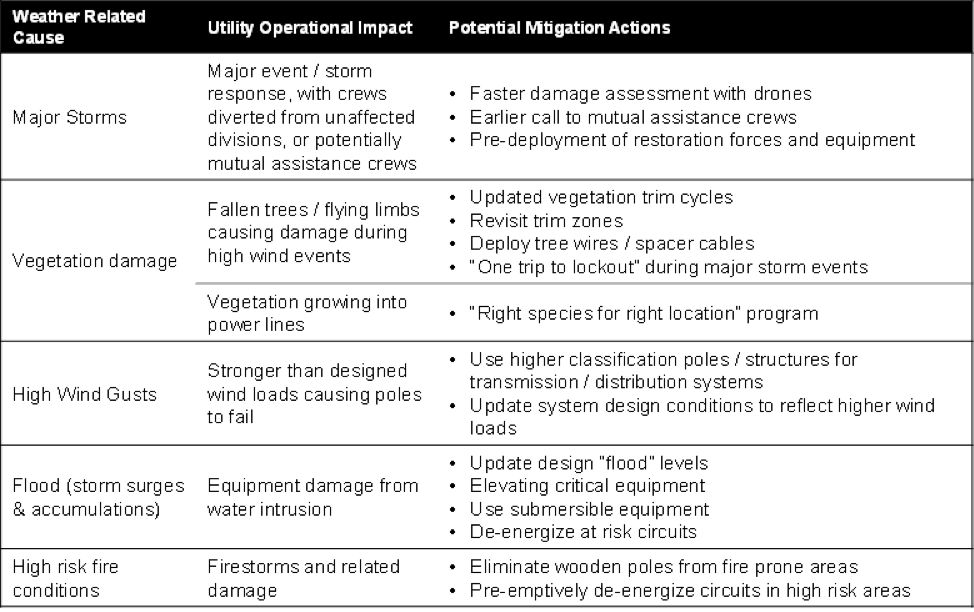 |
| 2. What can be done? Understanding the causes and impacts of weather-related damage can help identify mitigation steps to take before the storm hits. Courtesy: PA Consulting Group |
In recent years, utilities have hired meteorologists to help them better understand how changing weather patterns are impacting their day-to-day operations. These meteorologists have helped refine storm tracking to more-accurately predict storm paths, which allows utilities to better deploy damage assessment and restoration crews.
Operational Options for Utilities
Projecting more accurately the expected severity and type of damage enables utilities to make operational decisions that optimize the restoration process. California utilities have put in place plans to de-energize feeders in areas that face imminent high winds and high fire danger during the fire season. Utilities may also choose to disable the automatic reclosing (open/test/reclose) capabilities and let the system trip off when the first faults are detected during storm events. By doing so, potential damage from multiple reclosing attempts can be prevented. More customers may lose power operating this way, but less time may be needed after the storm to complete restoration efforts if damage is minimized on the distribution system as a result of such a policy.
Knowing where the higher-risk areas are likely to be will help utilities determine where and what type of damage can be expected. With the knowledge, managers can develop a plan to more-quickly mobilize and deploy restoration crews to those areas with the right equipment and repair tools. For small storms, earlier identification of potentially affected areas and likely damage allows utilities to gauge whether to hold crews over or request crews from adjacent divisions. For larger storms, utilities may need to call and pre-deploy mutual assistance crews and drone damage assessment teams, so that a greater number of restoration forces will be ready to bring customers back online as soon as the storm is over and damage assessment is complete.
Although these operational strategies typically only address restoration activities and do not avert system disruptions, there are other options that can mitigate the risks from extreme weather and prevent some outages from ever occurring.
Vegetation Management Tactics and System Hardening
Flying debris like tree limbs can play a significant role in distribution outages. A utility’s scheduled trim cycle times and trim zones are typically designed to ensure that typical tree growth will not come in contact with power lines. However, as faster growing species are planted, the cycle times and trim zones need to be re-evaluated to prevent trees from causing outages. Stronger, more-resilient spacer cables (tree wires) may also be deployed to mitigate potential damage.
Utilities are already pushing “right-tree-for-the-right-place” initiatives to ensure that there is a balance between the decorative trees customers are planting and the clearances needed to ensure the safe operation of their distribution system. This, along with an updated vegetation management plan, can have a direct impact on mitigating the wind damage to the distribution system resulting from higher wind gusts.
Longer-term solutions are being designed and deployed in regions frequented by major storms or in response to cataclysmic events. Stronger poles, raised substations, and submersible network protectors have all been deployed to address the damages and lessons learned in states such as Florida, New Jersey, and New York. System-wide hardening efforts are expensive, and will require the backing of regulatory agencies, advocacy groups, and customers to support the recovery of the investments made for major infrastructure improvements.
As weather-related factors cause more damage to the transmission and distribution systems, there will come a point where it would make sense to reinforce or underground the most-exposed portions of the systems or the circuits that serve critical customers, including emergency services, hospitals, fueling stations, and depots. Utilities will need to have an open dialogue with regulators and customers to prioritize these critical facilities for reinforcement and to maximize benefits achieved.
Addressing and Meeting Customer Expectations Is Critical
Over the past few years utilities have begun to focus more on their customers’ experience. Utilities have prioritized better interactions, particularly when it comes to communicating information during outages, in order to forge a better relationship and improve their customers’ perception of the utility. A large part of this journey is being able to shape, manage, and address a customer’s expectations. This includes sharing more information so they are aware of the utility’s actions to address the issues at hand.
For example, access to utility outage maps have become more commonplace, and these maps have increased the amount of information communicated to the customers, such as outage status and increasingly accurate estimated time of restoration. With this, utilities are able to shape customer expectations, and potentially make outages less disruptive by empowering customers with the knowledge to make alternate plans.
Utilities have a plethora of solutions they can apply to mitigate the increased weather risks that customers and the system face. Utilities obviously must make the determination as to which solutions to pursue to balance operational needs, customer needs, as well as those of shareholders. Public and employee safety are the preeminent determinants, and reliability is a strong second.
However, the planning and risk mitigation process can be lengthy and contentious at times. Utilities have been successful in getting mitigation measures approved after major catastrophic events (such as flood mitigation efforts after Superstorm Sandy and transmission system hardening efforts after Hurricane Wilma). Yet, even in these “after-the-fact” cases where stakeholders saw first-hand the full extent of the damages, the utilities faced a relatively uphill climb to get their mitigation programs approved.
Given the new normal of increased storm frequency, both severe and less severe, utilities need to study their own risks and exposures, and look to adopt lessons learned from those companies that have experienced similar risks. Utilities will need to have earlier strategic conversations with their customers, advocates, regulators, and other key stakeholders to discuss the preferred options for their service territories and infrastructure that makes sense to address the specific risks faced. ■
—Gregg Edeson is the grid modernization lead at PA Consulting Group and the ReliabilityOne program director. Wei Du and Earl Evon are energy and utilities experts at PA Consulting Group focused on reliability,outage analytics, resiliency,and major event response.


